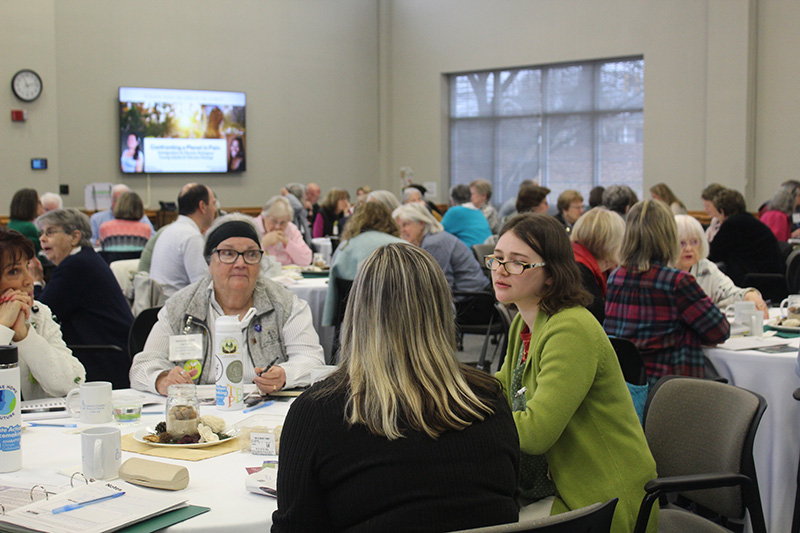By Janet Broderick
Step onto the grounds of St. John Neumann in Reston, Virginia and you can’t help but be awed by the scenery. Even in the heavily developed suburb of Washington DC, our church is surrounded by rich woods crisscrossed with walking paths. One of these paths is our prayer loop, where parishioners can pick up cards printed with meditative prayers and walk a short way among oaks, hickories, and hollies.


Throughout the year, we host guided walks through the more extensive network of trails nearby. We celebrated Earth Day 2022 with one such walk. After an opening prayer, we took to the woods. The trees had not yet unfurled their leaves, but native wildflowers like Virginia bluebells, toadshade trilliums, and Solomon’s seal were blossoming throughout the forest floor. An experienced bird watcher directed our eyes and ears to native chickadees, wrens and thrushes. We also heard the calls of migrating warblers and grosbeaks using our wooded stream valley as a welcome stopover on their way north.
As we walked, we noted a number of non-native species populations like garlic mustard and lesser celandine, which seem lush and lovely but which out-compete the local species. We considered the parallels to our faith lives – that temptation can be attractive but inhibits our natural talents from flourishing. The natural sporadic pruning of the outer tips of the oak trees by the recent cicada brood reminded us of the healthy feeling we experience after the pruning effect of the sacrament of reconciliation.
As a parish we not only care for the beautiful grounds on which we worship, but we have also found ways to make it an active part of our prayer life. Our proximity to nature gives us a chance to learn from and contemplate God’s creation.






